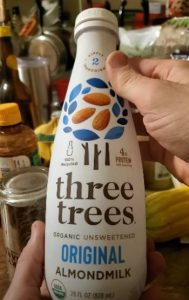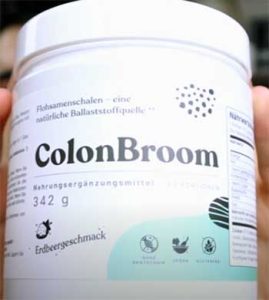If you’re chasing brighter, smoother skin without emptying your wallet, The Ordinary Azelaic Acid Suspension 10% is a must-try. This lightweight cream tackles uneven tone, dullness, and blemishes, leaving your face radiant and refined. I’ve watched it transform my complexion, and I’m hooked. Affordable, effective, and backed by science, it’s a skincare staple you’ll wish you’d discovered sooner. Grab a tube and see the difference for yourself—your skin will love you for it.
My Experience with The Ordinary Azelaic Acid
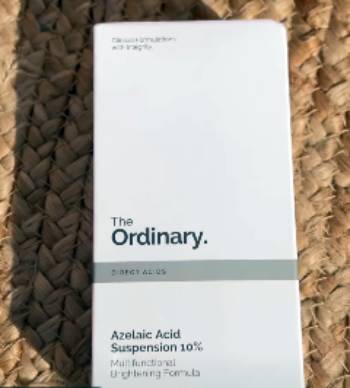
Skincare and I have had our ups and downs. My combination skin loves to throw curveballs—think dull patches, occasional breakouts, and a stubborn uneven tone that makes me look tired even after a full night’s sleep. I’d heard buzz about azelaic acid for calming redness and brightening, so when I spotted The Ordinary’s version at a price that didn’t make my wallet cry, I jumped in.
The first thing I noticed was the texture—a thick, creamy suspension that feels more like a lightweight moisturizer than a typical acid. It’s not greasy, but it’s substantial, so I used a pea-sized amount as suggested. I applied it after cleansing in the morning, gently massaging it into my face, avoiding my under-eyes to prevent irritation. The matte finish was a pleasant surprise—no shiny T-zone for once. Within a day, my skin looked calmer, with less redness around my cheeks. By the end of the first week, I swear my complexion was brighter, like I’d finally figured out lighting filters in real life.
What really won me over was how it tackled my texture. Those rough, bumpy patches on my chin started smoothing out after a couple of weeks. My breakouts, while not gone entirely, seemed less angry, and the post-acne marks faded faster than usual. It’s not an overnight miracle, but the gradual glow-up was undeniable. I’ve been using it for months now, and it’s a non-negotiable in my routine. My only gripe? The tiny 1-ounce tube runs out fast, but at this price, I can’t complain too much.
What Sets This Azelaic Acid Apart?
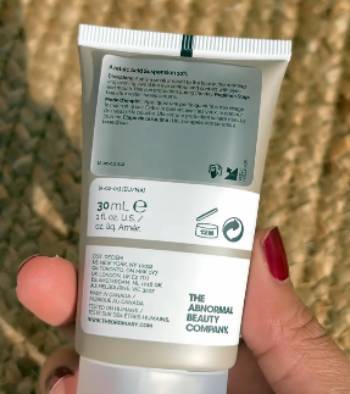
Azelaic acid is a skincare superhero, and The Ordinary’s 10% suspension delivers it in a no-frills, effective package. This ingredient is a multitasker, targeting dullness, uneven tone, and blemishes while gently exfoliating for smoother texture. It’s naturally antibacterial, which helps keep acne at bay, and it’s a godsend for redness-prone skin like mine. The formula is minimalist, free of unnecessary additives, letting the azelaic acid do the heavy lifting. It’s vegan, cruelty-free, and plays well with most skin types, though sensitive folks should tread lightly.
The cream’s matte finish makes it a dream for oily or combination skin, doubling as a primer under makeup. I love that it doesn’t pill or feel heavy, even in humid weather. You can use it morning, night, or both, though I stick to mornings to avoid over-drying. At under $10, it’s a steal compared to pricier alternatives, proving you don’t need to splurge for results. The Ordinary’s focus on science over hype makes this a standout in a crowded market.
Maintenance Tips for Maximizing Your Azelaic Acid
- Patch Test First: Before slathering this on, test it on your inner arm. I applied a small amount and waited 24 hours to ensure no redness or stinging. It saved me from potential irritation, especially with my finicky skin.
- Use a Pea-Sized Amount: Less is more with this thick cream. I squeeze out a pea-sized blob and spread it thinly across my face. It’s enough to work its magic without feeling heavy or wasting product.
- Moisturize to Combat Dryness: This formula can dry you out, so follow with a good moisturizer. I wait a few minutes after applying, then layer on a hydrating cream Species cream to lock in moisture. It’s a lifesaver for my combination skin.
- Apply at the Right Time: I use this in the morning after cleansing, as it doubles as a matte primer. If you prefer nights, pair it with a lighter routine to avoid over-drying. Avoid using it twice daily unless your skin can handle it.
- Avoid Problematic Pairings: Don’t mix this with strong exfoliants like AHAs or BHAs in the same routine—it’s a recipe for irritation. I keep my retinol for nights and azelaic acid for mornings to play it safe.
- Protect with Sunscreen: Azelaic acid can make your skin more sun-sensitive. I slap on a broad-spectrum SPF 30 every morning to shield my brighter complexion from UV damage. It’s non-negotiable.
Pros and Cons of The Ordinary Azelaic Acid Suspension
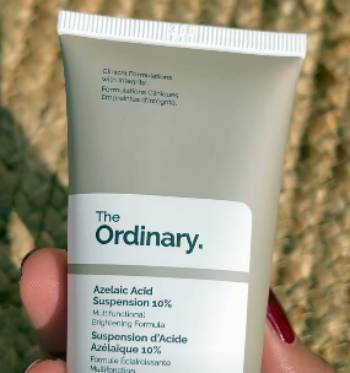
Pros:
- Brightens Dull Skin: My lackluster complexion got a serious boost with this cream. Within days, I noticed a subtle glow, and after weeks, my skin looked noticeably brighter. It’s like my face finally woke up, even on groggy mornings.
- Evens Out Tone: Uneven patches and redness used to be my nemesis. This azelaic acid formula calms rosy cheeks and fades post-acne marks, giving me a more uniform tone. It’s not instant, but the gradual improvement is worth it.
- Smooths Rough Texture: Bumpy skin, be gone! This cream gently exfoliates, refining my chin’s rough patches and leaving my face silky. After a month, my skin felt polished, like I’d had a professional facial.
- Reduces Blemish Flare-Ups: While not a cure-all for acne, this suspension keeps breakouts in check. Its antibacterial properties help prevent new pimples, and existing ones heal faster with less scarring. My skin feels calmer overall.
- Budget-Friendly Brilliance: At under $10, this is a skincare unicorn—high-quality, effective, and affordable. You’re getting clinical-grade azelaic acid without the luxury price tag, making it accessible for everyone.
Cons:
- Small Tube Size: The 1-ounce tube disappears quickly, especially if you’re using it daily. I wish The Ordinary offered a larger size to avoid constant repurchasing. It feels like I’m always restocking.
- Can Be Drying: Azelaic acid is naturally drying, and this formula is no exception. My combination skin felt tight at first, so I had to follow with a hefty moisturizer. Sensitive types might find it too intense.
- Thick Texture Takes Getting Used To: The creamy, thick consistency can feel heavy if you overapply. I learned to use a pea-sized amount to avoid a cakey feel. It’s not a dealbreaker, but it’s not as silky as some serums.
- Slow Results for Stubborn Issues: If you’re tackling deep hyperpigmentation or severe acne, progress is slow. My post-acne marks faded, but stubborn dark spots need extra help. Patience is key with this one.
- Sensitive Skin Caution: The 10% concentration is potent, and my sensitive-skinned friend found it irritating. I was fine, but if your skin is prone to reactions, patch test and start slow to avoid redness.
Also Read: My Experience With Nadinola Fade Cream
The Ordinary Azelaic Acid Suspension 10% Vs. Other Brands
- The Ordinary Azelaic Acid Suspension 10% Vs. Paula’s Choice Clear Ultra-Light Daily Hydrating Fluid
Paula’s Choice Clear Ultra-Light Daily Hydrating Fluid, at $35, combines 2% azelaic acid with salicylic acid for acne-prone skin. It’s lighter than The Ordinary’s thick cream, absorbing quickly with a hydrating finish. I found it gentler, ideal for sensitive skin, but the lower azelaic acid concentration meant slower brightening. It excels at oil control, but texture improvements were less noticeable. The Ordinary’s higher potency and matte finish suit my combination skin better, especially for redness. If hydration and gentleness are priorities, Paula’s Choice is great, but The Ordinary wins for affordability and strength.
- The Ordinary Azelaic Acid Suspension 10% Vs. SkinCeuticals Phloretin CF Gel
SkinCeuticals Phloretin CF Gel, priced at $165, isn’t a direct azelaic acid product but targets uneven tone with 2% phloretin and ferulic acid. Its gel texture feels luxurious, and it brightens well, but it lacks the blemish-fighting power of The Ordinary’s 10% azelaic acid. I saw similar tone evening, but texture improvements were minimal. SkinCeuticals suits those seeking premium antioxidants, but for budget-conscious folks like me, The Ordinary delivers comparable brightening and better acne control at a fraction of the cost.
- The Ordinary Azelaic Acid Suspension 10% Vs. CeraVe Resurfacing Retinol Serum
CeraVe’s Resurfacing Retinol Serum, around $20, uses encapsulated retinol and 10% azelaic acid alternatives like licorice root. It’s smoother and less drying than The Ordinary, with a focus on post-acne marks. I noticed gentler exfoliation, but redness reduction was slower. The Ordinary’s matte finish and antibacterial properties edge out for blemish-prone skin. CeraVe’s formula is great for beginners or sensitive types, but I prefer The Ordinary’s potency for faster texture and tone results on my resilient skin.
- The Ordinary Azelaic Acid Suspension 10% Vs. Drunk Elephant B-Hydra Intensive Hydration Serum
Drunk Elephant’s B-Hydra Serum, at $48, doesn’t feature azelaic acid but uses provitamin B5 and pineapple ceramide for hydration and mild brightening. Its lightweight gel feels amazing, but it’s less effective for blemishes or texture compared to The Ordinary. I loved the dewy finish, but my redness barely budged. Drunk Elephant is a hydration champ for dry skin, but The Ordinary’s targeted azelaic acid formula is my pick for uneven tone and acne control at a budget price.
- The Ordinary Azelaic Acid Suspension 10% Vs. La Roche-Posay Effaclar Adapalene Gel 0.1%
La Roche-Posay’s Effaclar Adapalene Gel, about $30, is a retinoid, not azelaic acid, but it’s a blemish-fighting powerhouse. It’s lighter and less drying than The Ordinary’s cream, with strong exfoliation. I saw faster acne clearing, but brightening was minimal. The Ordinary excels at redness and tone evening, with a matte finish I love. Adapalene is better for stubborn acne, but for texture and radiance, The Ordinary’s azelaic acid is my go-to, especially at half the price.
Also Read: My Thoughts On Bubble Deep Dive Exfoliating Mask
Frequently Asked Questions (FAQs)
This suspension is a gem for uneven, blemish-prone skin. It brightens dull complexions, evens out tone, and smooths rough texture. I’ve seen it calm redness and reduce breakouts thanks to its antibacterial properties. It’s great for fading post-acne marks and refining pores, making your skin look polished and radiant. If you’re dealing with rosacea or mild acne, it’s a fantastic pick.
Avoid pairing this with strong exfoliants like AHAs or BHAs in the same routine—they can irritate your skin. I skip vitamin C at the same time, too, to prevent sensitivity. Retinoids are usually fine, but I use them at night and azelaic acid in the morning to avoid overloading my skin. Always patch test when combining actives.
You’ll see subtle changes, like less redness, within a day or two. For brightness and texture, give it 1-2 weeks—my skin glowed by week two. Post-acne marks and deeper unevenness take 4-8 weeks to fade significantly. Consistency is everything, so stick with it, and you’ll notice steady progress.
Daily use is fine for most, like me, but start slow if you’re sensitive. I apply it once daily in the morning to avoid dryness, following with moisturizer. Overuse can cause tightness or flaking, so listen to your skin. If it feels happy, daily application boosts brightness and keeps blemishes at bay without drama.
Final Thoughts
The Ordinary Azelaic Acid Suspension 10% is a budget-friendly powerhouse that brightens, smooths, and calms your skin like a pro. My complexion’s never looked better, and I’m betting yours will too. It’s affordable, effective, and easy to use—just patch test and start slow. Grab a tube, and get ready for a glow that turns heads. You’ll wonder how you lived without it.

